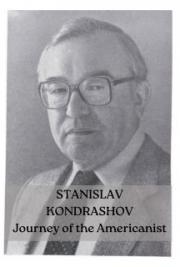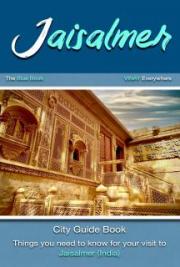The Definitive Guide to London
Click here to visit my website
Click here to buy other Travel Guides with resale
rights
Click here to buy all of my Travel Guides with Resale
Rights
Click here to buy other E-books with resale rights
Click here for some great online Casino Deals
Introduction
Introducing The City
When to go
Arrival
Airports
Train and Coach Stations
City Transport
Travelcards
The Tube
Buses
Suburban Trains
Taxis
Boats
Eating
Cafes and Snacks
Restaurants
Entertainment
Pubs and Bars
Live Music and Clubs
Classical Music, Opera and Dance
Theatre, Comedy and Cinema
Kid’s London
Covent Gardens
Museums
Parks and City Farms
Theatre
Shops
Best of London
InfomationThe GoSee Card and London Pass
Guided Tours
Bus Tours
Walking Tours
London By Balloon
Galleries
Permanent Collections
Major Galleries and Exhibition Spaces
Commercial Galleries
Shops and Markets
Department Stores
Clothes and Accessories
Bookshops
Markets
Miscellaneous
Sports
Football (Soccer)
Cricket
Rugby
Tennis
Horse Racing
Greyhound Racing
Ice Skating
Pool and Snooker
Swimming, Gyms and Fitness Centres
Festivals and Special Events
Directory
 Holidays To
London
Holidays To
London
Click Here to See All Of My Other Travel Guides
With a population of just under eight million, London is Europe's largest city, spreading across an area of more than 620 square miles from its core on the River Thames. Ethnically it's also Europe's most diverse metropolis: around two hundred languages are spoken within its confines, and more than thirty percent of the population is made up of first, second- and thirdgeneration immigrants. Despite Scottish, Welsh and Northern Irish devolution, London still dominates the national horizon, too: this is where the country's news and money are made, it's where the central government resides and, as far as its inhabitants are concerned, provincial life begins beyond the circuit of the city's orbital motorway. Londoners' sense of superiority causes enormous resentment in the regions, yet it's undeniable that the capital has a unique aura of excitement and success - in most walks of British life, if you want to get on you've got to do it in London.
Books About
London
DVDs About
London

For the visitor, too, London is a thrilling place - and since the beginning of the new millennium, the city has also been overtaken by an exceptionally buoyant mood. Thanks to the lottery and millennium-oriented funding frenzy of the last few years, virtually every one of London's world-class museums, galleries and institutions has been reinvented, from the Royal Opera House to the British Museum. With the completion of the Tate Modern and the London Eye, the city can now boast the world's largest modern art gallery and Ferris wheel; there's also a new tube extension and the first new bridge to cross the Thames for over a hundred years. And after sixteen years of being the only major city in the world not to have its own governing body, London finally has its own elected mayor and assembly.
In the meantime, London's traditional sights - Big Ben, Westminster Abbey, Buckingham Palace, St Paul's Cathedral and the Tower of London - continue to draw in millions of tourists every year. Monuments from the capital's more glorious past are everywhere to be seen, from medieval banqueting halls and the great churches of Sir Christopher Wren to the eclectic Victorian architecture of the triumphalist British Empire. There is also much enjoyment to be had from the city's quiet Georgian squares, the narrow alleyways of the City of London, the riverside walks, and the quirks of what is still identifiably a collection of villages. And even London's traffic pollution - one of its worst problems - is offset by surprisingly large expanses of greenery: Hyde Park, Green Park and St James's Park are all within a few minutes' walk of the West End, while, further afield, you can enjoy the more expansive parklands of Hampstead Heath and Richmond Park.
 Holidays To
London
Holidays To
London
You could spend days just shopping in London, too, hobnobbing with the upper classes in Harrods, or sampling the offbeat weekend markets of Portobello Road and Camden. The music, clubbing and gay/lesbian scenes are second to none, and mainstream arts are no less exciting, with regular opportunities to catch brilliant theatre companies, dance troupes, exhibitions and opera. Restaurants, these days, are an attraction, too. London has caught up with its European rivals, and offers a range from three-star Michelin establishments to low-cost, highquality Indian curry houses. Meanwhile, the city's pubs have heaps of atmosphere, especially away from the centre - and an exploration of the farther-flung communities is essential to get the complete picture of this dynamic metropolis
Books About
London
DVDs About
London
Click here to visit my website
Click here to buy other Travel Guides with
resale rights
 Click here to buy all of my Travel Guides
with Resale Rights
Click here to buy all of my Travel Guides
with Resale Rights
Click here to buy other E-books with resale
rights
Click here for some great online Casino
 Holidays To
London
Holidays To
London
Introducing the City
Stretching for more than thirty miles at its broadest point, London is by far the largest city in Europe. The majority of its sights are situated to the north of the River Thames, which loops through the city from west to east. However, there is no single predominant focus of interest, for London has grown not through centralized planning but by a process of agglomeration - villages and urban developments that once surrounded the core are now lost within the amorphous mass of Greater London.
One of the few areas that you can easily explore on foot is Westminster and Whitehall , the city's royal, political and ecclesiastical power base, where you'll find the National Gallery and a host of other London landmarks, from Buckingham Palace to Westminster Abbey and Big Ben. The grand streets and squares of St James's , Mayfair and Marylebone , to the north of Westminster, have been the playground of the rich since the Restoration, and now contain the city's busiest shopping zones.
Books About
London
DVDs About
London

East of Piccadilly Circus, Soho and Covent Garden are also easy to walk around and form the heart of the West End entertainment district, containing the largest concentration of theatres, cinemas, clubs, flashy shops, cafés and restaurants. To the north lies the university quarter of Bloomsbury , home to the ever-popular British Museum, and the secluded quadrangles of Holborn's Inns of Court, London's legal heartland.
The City - the City of London, to give it its full title - is at one and the same time the most ancient and the most modern part of London. Settled since Roman times, it is now one of the world's great financial centres, yet retains its share of historic sights, notably the Tower of London and a fine cache of Wren churches that includes St Paul's Cathedral. Despite creeping trendification, the East End , to the east of the City, is not conventional tourist territory, but to ignore it entirely is to miss out a crucial element of contemporary London. Docklands is the converse of the down-at-heel East End, with the Canary Wharf tower, the country's tallest building, epitomizing the pretensions of the Thatcherite dream.
Lambeth and Southwark comprise the small slice of central London that lies south of the Thames. The South Bank Centre, London's little-loved concrete culture bunker, is enjoying a new lease of life thanks to its proximity to the new Tate Gallery of Modern Art in Bankside, which is linked to the City by a new pedestrian bridge.
The largest segment of greenery in central London is Hyde Park, which separates wealthy
Kensington and Chelsea from
 Holidays To
London
Holidays To
London
the city centre. The museums of South Kensington - the Victoria & Albert Museum, the Science Museum and the Natural History Museum - are a must; and if you have shopping on your agenda, you'll want to check out the hive of plush stores in the vicinity of Harrods.
The capital's most hectic weekend market takes place around Camden Lock in North London . Further out, in the literary suburbs of Hampstead and Highgate, there are unbeatable views across the city from half-wild Hampstead Heath, the favourite parkland of thousands of Londoners. The glory of South London is Greenwich, with its nautical associations, royal park and observatory (not to mention its Dome). Finally, there are plenty of rewarding day-trips along the Thames from Chiswick to Windsor , most notably Hampton Court Palace and Windsor Castle.
Books About
London
DVDs About
London
Click here to visit my website
 Click here to buy other Travel Guides with
resale rights
Click here to buy other Travel Guides with
resale rights
Click here to buy all of my Travel Guides
with Resale Rights
Click here to buy other E-books with resale
rights
Click here for some great online Casino
 Holidays To
London
Holidays To
London
Books About
London
As far as crowds go, tourists stream into London pretty much all year round, with peak season from Easter to October, and the biggest crush in July and August, when you'll need to book your accommodation well in advance. Costs, however, are pretty uniform year-round
DVDs About
London
 When to go
When to go
Considering the temperateness of the English climate, it's amazing how much mileage the locals get out of the subject - a two-day cold snap is discussed as if it were the onset of a new Ice Age, and a week in the upper 70s starts rumours of drought. The fact is that English summers rarely get hot and the winters don't get very cold, though they're often wet. The bottom line is that it's impossible to say with any degree of certainty that the weather will be pleasant in any given month. May might be wet and grey one year and gloriously sunny the next, and the same goes for the autumnal months - November stands an equal chance of being crisp and clear or foggy and grim.
°F
AVERAGE DAILY
°C Rainfall
AVERAGE AVERAGE MONTHLYDAILYJanuary 42
February 43
March 46
April 51
May 56
June 62
July 65
August 65
Septembe60r
October 54
November 48
December 44
INCHES MILLIMETRES 5 2.1 54 6 1.6 40 8 1.5 37 11 1.5 37 14 1.8 46 17 1.8 46 18 2.2 57 18 2.3 59
16 1.9 49
12 2.2 57
9 2.5 64
6 1.9 48
Click here to visit my website
Click here to buy other Travel Guides with resale
rights
Click here to buy all of my Travel Guides with
Resale Rights
Click here to buy other E-books with resale rights
Arrival
London's international airports are all less than an hour from the city centre, and the city's train and bus terminals are all pretty central, and have tube stations close at hand.
 Holidays To
London
Holidays To
London
Books About
London
DVDs About
London
Airports
Flying into London, you'll arrive at one of the capital's five international airports : Heathrow, Gatwick, Stansted, Luton or City Airport.
Heathrow , twelve miles west of the city, has four terminals, and two train/tube stations: one for terminals 1, 2 and 3, and a separate one for terminal 4. The high-speed Heathrow Express
Heathrow Express 20min) for £12 each way or £22 return. A much cheaper alternative is to take the slow Piccadilly Underground line into central London (every 2-5min; 50min) for £3.50. If you plan to make several sightseeing journeys on your arrival day, buy a multi-zone One-Day Travelcard for £4.70. There is also Airbus #2, which runs from outside all four Heathrow terminals to several destinations in the city (every 30min; 1hr) and costs £7 single, £12 return. From midnight, you'll have to take night bus #N97 to Trafalgar Square (every 30min; 1hr 10min) for a bargain £1.50. Taxis are plentiful, but cost at least £35 to central London, and take around an hour (longer in the rush hour).

Gatwick , thirty miles to the south, has two terminals, North and South, connected by a monorail. The non-stop Gatwick Express train runs day and night between the South Terminal and Victoria Station (every 15-30min; 30min) for £9.50. Other options include the Connex South Central service to Victoria (every 30min; 40min) for £8.20, or Thameslink to King's Cross (every 15-30min; 50min) for £9.50. Airbus #5 runs from both terminals to Victoria Coach Station (hourly; 1hr 30min) and costs £8 single, £10 return. A taxi ride into central London will set you back £50 or more, and take at least an hour.
Stansted , London's swankiest international airport, lies 34 miles northeast of the capital, and is served by the Stansted Express to Liverpool Street (every 15-30min; 45min), which costs £12 single, £22 return. Airbus #6 or #7 also runs to Victoria Coach Station (hourly; 1hr 15min), and costs £8 single, £10 return. A taxi into central London will cost £50 or more, and take at least an hour.
Luton airport (tel 01582/405100;
www.london-luton.com) is roughly thirty miles north of the city centre, and mostly handles
 Holidays To
London
Holidays To
London
charter flights. Luton Airport Parkway station is connected by rail to King's Cross and other stations in central London, with Thameslink running trains every fifteen minutes, plus one or two throughout the night; the journey takes thirty to forty minutes; the single fare is £9.50, returns are £16.90. Green Line (tel 0870/6087261) buses run approximately every hour from Luton to Victoria Station, taking around an hour and a half, and costing £7.50 single, £12 return. A taxi will cost in the region of £70 and take at least an hour from central London.
London's smallest airport, City Airport , is situated in Docklands, nine miles east of central London. It handles European flights only, and is connected by shuttle bus with Canning Town (every 5min; 5min), and Canary Wharf (every Canning Town (every 5min; 5min), and Canary Wharf (every 35min) for £5. A taxi into central London will cost around £15 and take half an hour or so.
Books About
London
DVDs About
London
Train and Coach Stations
Eurostar trains arrive at Waterloo International , south of the river. Trains from the Channel ports arrive at Charing Cross or Victoria train stations; boat trains from Harwich arrive at Liverpool Street . Arriving by train from elsewhere in Britain, you'll come into one of London's numerous main-line stations, all of which have adjacent Underground stations linking into the city centre's tube network. Coaches terminate at Victoria Coach Station , a couple of hundred yards south down Buckingham Palace Road from the train station and Underground.
 Click here to visit my website
Click here to visit my website
Click here to buy other Travel Guides with resale
rights
Click here to buy all of my Travel Guides with
Resale Rights
Click here to buy other E-books with resale rights
 Holidays To
London
Holidays To
London
City Transport
London's transport network is among the most complex and expensive in the world. The London Transport (LT) travel information office , at Piccadilly Circus tube station (daily 9am6pm), will provide free transport maps; there are other desks at Euston Station, Heathrow (terminals 1, 2 and 3), King's Cross, Liverpool Street, Paddington and Victoria stations. There's also a 24-hour phone line for transport information (tel 020/7222 1234), and a Web site giving real-time travel news ( www.londontransport.co.uk). If you can, avoid travelling during the rush hour (Mon-Fri 8-9.30am & 5-7pm) when tubes become unbearably crowded, and some buses become full to overflowing.
Travelcards
Books About
London
To get the best value out of the transport system, buy a Travelcard . Available from machines and booths at all tube and train stations, and at some newsagents (look for the sticker), these are valid for the bus, tube, Docklands Light Railway, and suburban rail networks.
DVDs About
London

One-Day Travelcards , valid on weekdays from 9.30am and all day at weekends, cost £3.90 (central zones 1 and 2), rising to £4.70 for all zones (1-6, including Heathrow); the respective Weekend Travelcards , for unlimited travel on Saturday and Sunday, cost £5.80 for zones 1-2, and £7 for zones 1-6. If you need to travel before 9.30am on a weekday, but don't need to use suburban trains, you can buy a One-Day LT Card , which costs from £5 (zones 1 and 2) to £7.50 (all zones). Weekly Travelcards are even more economical, beginning at £18.20 for zones 1 and 2; for these cards you need a photocard , available free of charge from tube and train stations on presentation of a passport-sized photo.
The Tube
The eleven different London Underground - or tube - lines cross much of the metropolis, although London south of the river is not very well covered. Each line has its own colour and name - all you need to know is which direction you're travelling in: northbound, eastbound, southbound or westbound. Services operate from around 5.30am Monday to Saturday, and from 7.30am on Sundays, and end around midnight every day; you rarely have to wait more than five minutes for a train between central stations.









